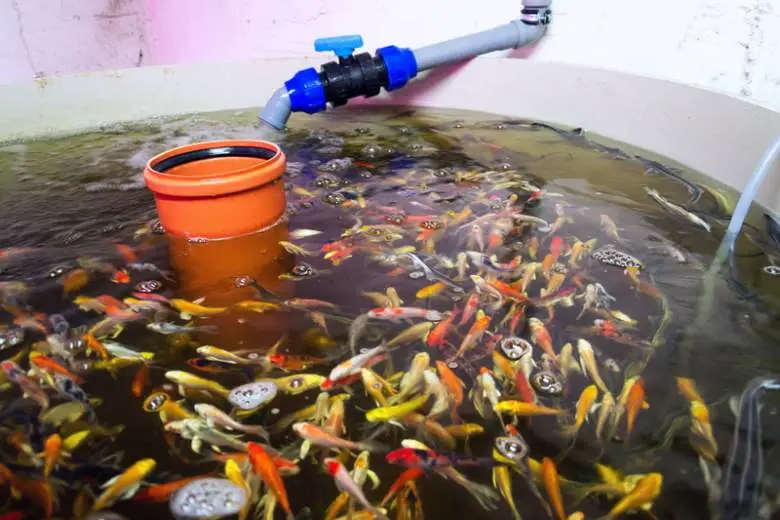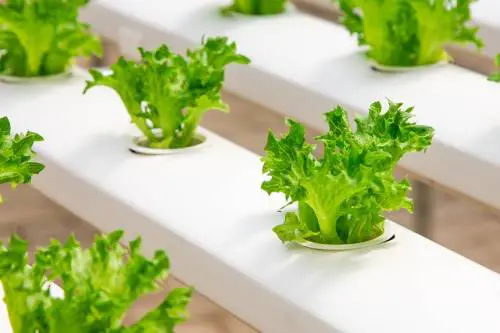Many people have heard of aquaponics, and it’s suitable for growing food and fish in a small area. However, not everything is as golden as it appears on the surface.
With this, we will look at the top 5 disadvantages of aquaponics. You will see how installation costs, types of crops, electric use, expertise for installation, and potential failure can all be a downside for any new aquaponics gardener.
Aquaponics Benefits Overview
Before looking at the disadvantages, it is good to understand the advantages of building an Aquaponics garden. With comparison, you can see if the downsides outweigh the good points or vice versa.
Here are the benefits in bullet list form to compare before we look in more detail later.
- Plant Watering: Because aquaponics is a closed system, you don’t have to water your plants, but you will have to keep your fish tank water level topped.
- Speed of Growth: Plants in an aquaponics system grow twice as fast as plants grown by traditional methods. Aquaponic plants get nutrients directly from their roots. Fish waste is converted to nitrates, occurring around the clock.
- Growing Space: Aquaponics gardening saves space as you can grow ten times the food in the same area used by conventional methods.
- Organic Taste: Aquaponics is USDA Organic Certified. You don’t need to use any additional sprays or fertilizers that can take away this organic status.
- Fewer Weeds: Weeds are less likely to be an issue in an aquaponics system.
- Fish and Food: Aquaponics produces fish and crops in the same system with the same effort.
- Lower disease and pest risk: You’ll find your aquaponics system less prone to pests and diseases.
- Raised Beds: The media bed where your crops grow is lifted, thus suitable for people with back problems. Most tasks are at waist level or higher.
What Are The Disadvantages of Aquaponics
Here are details of the top five disadvantages of an aquaponics system.
Setup Costs
Pumps, tubing, tanks, and grow beds are all required to set up the system, which can be costly. To get the best results, such systems can perform better under covers, such as in a greenhouse or canopy. Without including these, you can purchase kits between $2,000 or more at the lowest cost.
More extensive systems that can feed a family start at around $5,000. However, there is no reason to go to this expense. If you take the time, you can rustle up many parts needed for a fraction of the cost.
You can build a system for 25-50% of the cost of a kit. Any large tanks can be used for tanks and grow beds, and you can use concrete blocks and a wooden frame rather than laying a concrete slab.
Gravel is affordable, and the direct costs fall onto your water pumps, air pumps, and tubing.
System Expertise
Setup requires a good understanding of how an aquaponics system operates. You can easily lose all your fish if you rush in and add fish too quickly after building. It takes a while for beneficial bacteria to accumulate in your system, much like an aquarium.
Besides this, gardeners can go the other way and add too many fish to their system, and the plants can’t convert all the waste and ammonia into nutrients. System cycling is vital, as is continual monitoring of pH levels for your crops and your fish.
Crop Types
Many say you can grow anything in an aquaponics system, and in theory, you can. However, not everything grows effectively, and sometimes, some crops aren’t worth the effort.
Leafy vegetables are the primary crops, and root vegetables are given a miss. This occurs because root crops can deform when they hit solid objects such as a stone in the ground. Growing in gravel can lead to crops that are strange shapes.
Electricity Use
Unfortunately, aquaponics demands the use of electricity to keep the system running and recycle the water. Even if aeration for your fish is catered to by returning water to the tank, you will run your water pump around the clock on some system types (flood and drain using a bell siphon).
Even if you use another timing schedule or system type, you will find you are running your pump multiple times per hour and an air pump for your fish tank aeration.
With larger systems, you will need larger water pumps or multiple pumps. Additional lighting can be an inclusion if your system isn’t outdoors or you can’t get the required amount of daily sun. Your system must be in a location where you have access to electricity.
Potential Failure
Based on the type of system you have, the effects of power failure or another kind of failure can significantly affect the health of your crops and your fish.
Your plants will get by in the short term, and you can manually water these. While it takes time, you could keep enough water in the system to protect your crops.
However, fish can’t survive too long without oxygen, and in an enclosed environment, the amount of ammonia would increase quickly. Should you have a power outage or pump failure while you are not by your system, you could see them suffer sooner rather than later.
Advantages Of Aquaponics
Any gardening will have disadvantages, and aquaponics is no different, as we can see.
However, many forms of gardening have as many upsides to them as aquaponics does. The plus sides easily outweigh the disadvantages, and most will be negated the longer you use your system.
Over time, the only cost you can see is that of your electricity. Here is a little more insight into the advantages of your aquaponics system.
Environmentally Friendly: Aquaponics is a closed system that doesn’t need the disposal of toxic wastes into any local watershed. Gardeners have a self-cleaning system and can let the plants do all the water treatment or add biomass filters as part of their system.
Organic Fertilizer: Aquaponics is user-friendly and healthier than organic farming. Your system generates its fertilizer rather than you depending on outside sources.
Commercial grade farming uses many fertilizers in comparison. In addition, you can do away with any pesticides or herbicides in aquaponics, as using them in close quarters can harm your fish.
Water Savings: Aquaponics delivers considerable water savings compared to a conventional garden. Numbers are around 80 to 90%, and the only water lost is that used by your plants, and the minimal amount of evaporation from the grow beds.
High Nutrition Levels: In all aquaponics systems, the fish and plants get all their needs from fish foods used to lead to waste. They are then converted to rich forms of nutrition available every minute of the day rather than the regular feeding of fertilizers in a typical garden.
Affordability: While there is a cost for electricity and potential fish food, there are cost savings in other areas. You can cut labor and fertilizer costs to zero as the system meets its own needs and takes little in terms of maintenance care.
Ease in Maintenance: Aquaponic systems are easy to run. If you use a bell siphon, these have no parts operated by external power, and thus no parts can break. Water pumps are the only area that requires maintenance.
Space Efficiency: You can quickly scale your aquaponics systems up or down, and the only area that needs changing can be the number of fish.
If horizontal space is at a premium, you can use vertical space using grow towers.
Install Anywhere: You can build your aquaponics system anywhere if you have access to electricity. If you have a commercial system or use them for a small profit, it can be built close to your market.
Transport costs can thus be reduced, as can damage from shipping.
Conclusion
As with any garden, there are upsides and downsides. Once you learn the upsides, you soon find these outweigh any downsides. After initial setup, any costs incurred, you can recoup expenses many times over, and electricity can more than be paid for by the return of bumper crops you harvest regularly.





